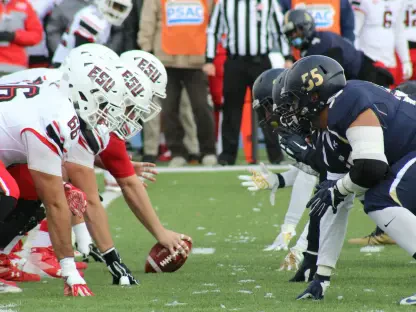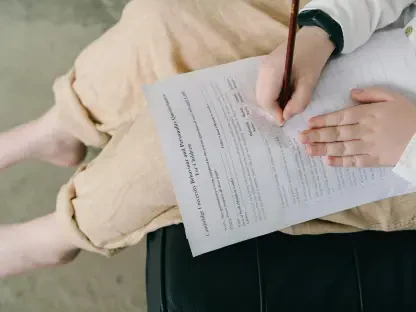Financial literacy among high school students has become increasingly crucial in today’s complex economic landscape. One innovative initiative designed to address this need is the “Get Real: Adulting 101” program. Hosted by JCI Santa Clarita in collaboration with the William S. Hart Union High School District, this program aims to equip students with practical insights into managing personal finances. By simulating real-life financial scenarios at Rio Norte Junior High School, this event has provided young individuals with a comprehensive understanding of budgeting, saving, managing debt, and preparing for unexpected expenses.
Hands-On Financial Education
Simulation Exercise Details
Central to this initiative is its hands-on approach to teaching financial literacy, eschewing traditional lectures in favor of a more interactive experience. Instead of passive learning, students receive personalized profiles reflecting various life scenarios, including specific occupations, incomes, marital statuses, and credit scores. For example, Calvin Jellings, a freshman at Canyon High School, was given the profile of a high school teacher earning a salary of $63,000 annually with a monthly budget of $6,300. This detailed profile required Jellings to manage monthly expenses such as transportation, utilities, housing, and other personal costs. The task was to balance his budget while ensuring all essential expenses were covered without exceeding the monthly allowance.
Such a personalized and interactive approach provides students with a taste of real financial responsibilities. By handling these individualized scenarios, students are able to grasp the practical challenges of managing finances. Unlike theoretical learning, this method offers a tangible and relatable experience, allowing students to understand the nuances of financial planning and the importance of making informed decisions.
Real-Life Pressure and Learning
The program emphasizes realism to drive home important financial lessons, incorporating elements that simulate the pressures and dynamics of actual financial situations. Volunteers, including representatives from local businesses and nonprofits, act as salespersons and advisors. They introduce real-world pressures, teaching students valuable lessons in negotiation and self-advocacy. According to Mack Herrera, JCI Executive Vice President and a financial advisor, the event aims to replicate real-life dynamics, where deliberate spending choices are paramount to avoid financial pitfalls.
This environmental realism is crucial for preparing students for adult financial responsibilities. Students learn to navigate the tricky waters of financial decision-making, where they must weigh their wants against their needs. This involves facing the pressure of sales tactics, budgeting for necessities, and even handling unexpected financial burdens. Such an immersive experience encourages students to develop critical thinking and problem-solving skills in a financial context while understanding the consequences of poor financial decisions.
Student Impact and Experiences
Realization of Financial Complexity
The impact of the “Get Real: Adulting 101” program on students has been profound, as evidenced by their experiences and feedback. The immersive simulation helps students appreciate the complexity of managing personal finances. Many participants, including Jellings, have described the exercise as both fun and stressful, providing a realistic taste of the intricacies involved in budgeting and financial planning. Since the program’s inception, more than 500 local students have benefited from this valuable experience.
This significant participation highlights the program’s effectiveness in demystifying financial concepts. Through hands-on learning, students can directly apply theoretical knowledge, bridging the gap between classroom learning and real-world application. The program encourages students to think critically about their financial choices, facilitating a deeper understanding of financial management. Such insights are instrumental in shaping well-rounded, financially savvy individuals ready to tackle the fiscal challenges of adulthood.
Expansion to Junior High Students
The inclusion of junior high students in the program marks a significant milestone, extending the benefits of early financial education beyond high school juniors and seniors. The program’s co-founders, Kari McCoy and J.R. Hills, emphasize the importance of introducing financial concepts early, ideally before students transition to college or the workforce. Reflecting on his own experiences, Hills underscores the value of programs like this one in filling the financial knowledge gap that many young people face.
By incorporating younger students, the program aims to foster financial literacy from an early age, instilling essential life skills that will serve them well into adulthood. This early exposure to financial planning and budgeting can have a lasting impact, empowering students to make informed decisions and avoid common financial pitfalls. Furthermore, it sets a solid foundation for continued financial education, preparing students for the more complex financial decisions they will encounter as they grow older.
Feedback and Accountability
Conversations on Financial Responsibility
Feedback from students and their families underscores the effectiveness of the simulation in promoting financial awareness and responsibility. Parents have observed that their children engage in discussions about financial responsibilities and the cost of living, conversations that were previously uncommon. This newfound awareness not only enhances the students’ understanding of financial management but also fosters a greater appreciation for the financial support provided by their parents.
These discussions are vital in reinforcing the lessons learned during the simulation. As students continue to reflect on their experiences, they gain a deeper comprehension of the importance of financial planning and management. Parents play a crucial role in this process, encouraging their children to apply these lessons in their daily lives. This dynamic creates a supportive environment where financial responsibility is continuously reinforced, leading to a more financially literate and responsible generation.
Learning Through Iterative Process
A critical component of the program is the inclusion of a “bank,” where volunteers review students’ budgets. This review process ensures that students who overspend are required to reassess their expenses and try again, reinforcing the concept of financial accountability. This iterative process is essential for helping students understand the importance of careful planning and responsible budgeting. Successful students receive small incentives, such as In-N-Out gift cards, adding a motivational element to the exercise.
The iterative nature of the simulation provides students with multiple opportunities to learn from their mistakes and improve their budgeting skills. This hands-on experience teaches resilience and persistence, essential qualities for successful financial management. By repeatedly adjusting their budgets, students develop a more nuanced understanding of financial planning, learning to adapt to various financial scenarios and challenges. This continuous learning process is crucial for instilling long-lasting financial habits.
Community Involvement and Future Expansion
Volunteer Support and Community Commitment
The success of the “Get Real: Adulting 101” program is heavily reliant on community involvement and support. Staffed entirely by trained volunteers, the program benefits from the diverse expertise and commitment of local businesses, nonprofits, and individuals. This collaborative effort underscores a community-wide dedication to fostering financial literacy among the younger generation. The volunteers’ role in challenging and engaging students effectively ensures that the simulation remains realistic and impactful.
The involvement of the community not only enhances the program’s quality but also strengthens the ties between local organizations and residents. This collective effort creates a supportive ecosystem where financial education is prioritized, benefiting both students and the broader community. Such initiatives highlight the importance of community engagement in addressing educational needs and preparing young individuals for future challenges.
Prospects for Expansion
Financial literacy among high school students has grown increasingly crucial in today’s complex economic landscape. To address this critical need, the “Get Real: Adulting 101” program was launched. Hosted by JCI Santa Clarita in collaboration with the William S. Hart Union High School District, the initiative is designed to provide students with practical insights into managing personal finances effectively. Held at Rio Norte Junior High School, the program simulates real-life financial scenarios to help young individuals gain a comprehensive understanding of budgeting, saving, managing debt, and preparing for unexpected expenses. Students participate in interactive activities that teach them how to create a budget, streamline their savings, handle debt responsibly, and plan for unforeseen financial challenges. This hands-on approach helps students develop vital skills that are not typically covered in traditional curriculums, ensuring they are better equipped to navigate their financial futures.









